Zululand
Nestled in the southeastern region of Africa, Zululand, known for its rich cultural heritage and the legacy of the powerful Zulu Kingdom, holds a brief but fascinating postal history. Originally the heartland of the Zulu people, the region became a focal point of colonial interest in the late 19th century. Following the Anglo-Zulu War of 1879, in which the British defeated the Zulu Kingdom, Zululand was annexed by Britain in 1887, marking the beginning of its status as a British protectorate.
Zululand’s postal history began under British administration. Its first postage stamps were issued in 1888 and consisted of overprints on British colonial stamps from Natal, with “ZULULAND” inscribed. These issues reflected the administrative ties between Zululand and the larger Natal colony while marking the territory’s distinct identity within the British Empire.
In 1894, Zululand began issuing its own definitive stamps featuring designs from Natal, including Queen Victoria’s portrait, which symbolized British authority over the region. These stamps were used for both domestic and international mail and are highly sought after by collectors for their historical significance and rarity.
The independent postal system of Zululand was short-lived. In 1897, Zululand was incorporated into the British colony of Natal, effectively ending its separate philatelic identity. Stamps of Natal replaced those of Zululand, bringing an end to the unique postal chapter of this historic region.
Today, stamps from Zululand remain prized by philatelists as a tangible link to a pivotal era in South African history, reflecting the transition from the Zulu Kingdom’s sovereignty to British colonial rule. They serve as enduring artifacts of a fascinating and turbulent period in the region’s past.
-
1944 SOUTH AFRICA (ZULULAND) – GB…RAF MTUBATUBA.. [23148]
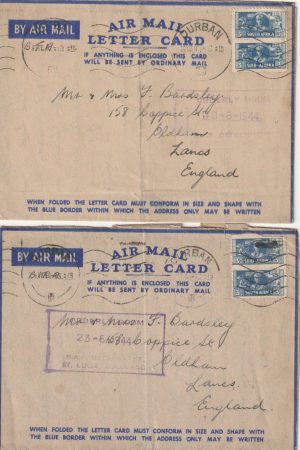 $70.00
Add to cart
More Info...
$70.00
Add to cart
More Info... -
1942 CYPRUS – SOUTH AFRICA (ZULULAND, NATAL)..WW2 CENSORED .. [22971]
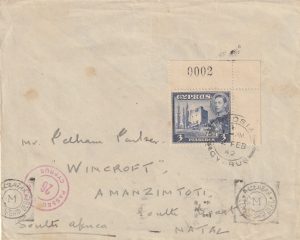 $425.00
Add to cart
More Info...
$425.00
Add to cart
More Info... -
1942 SOUTH AFRICA – GB..4d REGISTERED ENV. FOUND OPEN or DAMAGED.. [22711]
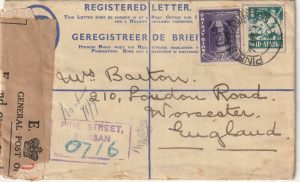 $40.00
Add to cart
More Info...
$40.00
Add to cart
More Info... -
1902 SOUTH AFRICA (KWA-ZULU / NATAL) – LOCALLY USED VERULAM.. [22668]
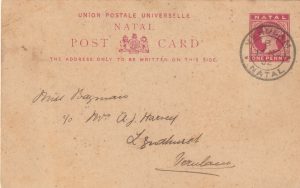 $25.00
Add to cart
More Info...
$25.00
Add to cart
More Info... -
1919 JAPAN – SWEDEN – SOUTH AFRICA..FORWARDED to INCHANGA, NATAL.. [21931]
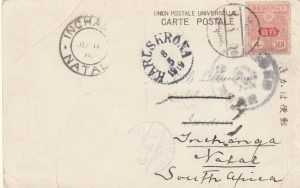 $125.00
Add to cart
More Info...
$125.00
Add to cart
More Info... -
1906 SOUTH AFRICA / NATAL / ZULULAND… BAMBATHA REBELLION… [21529]
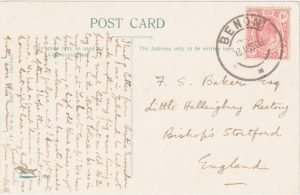 $100.00
Add to cart
More Info...
$100.00
Add to cart
More Info... -
1942 SOUTH AFRICA-USA..WW2 ZULULAND NATAL CENSORED with PATRIOTIC TABS [17084]
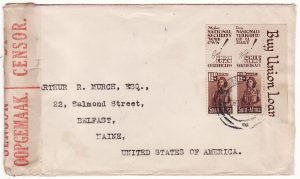 $150.00
Add to cart
More Info...
$150.00
Add to cart
More Info... -
1944 SOUTH AFRICA-USA …WW2 ZULULAND NATAL AIRMAIL & DOUBLE CENSORED [17083]
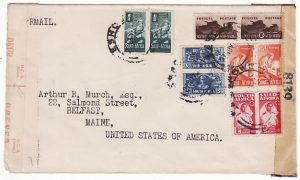 $170.00
Add to cart
More Info...
$170.00
Add to cart
More Info... -
1942 SOUTH AFRICA [WW2 NATAL REGISTERED INTERNAL in ZULULAND] [17081]
![SOUTH AFRICA [WW2 NATAL REGISTERED INTERNAL in ZULULAND]](https://mikewhiteuk.com/images/4585-300x180.jpg) $170.00
Add to cart
More Info...
$170.00
Add to cart
More Info...

